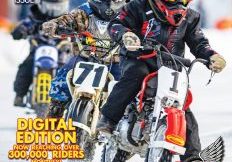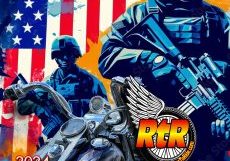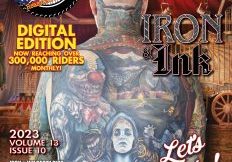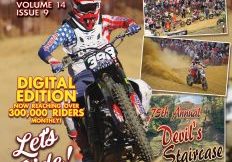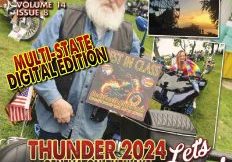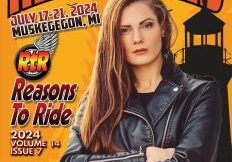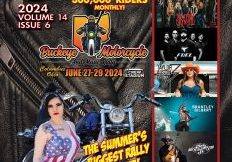Poker Run 101
PART 1: How to Get Started
EDITOR’S NOTE: A few years back we ran a series of articles focusing on how to effectively plan, organize, promote, and execute various motorcycle events – starting with the Poker Run. After countless requests for reprints and updates we decided to revisit the topic this spring and update the series. For immediate assistance with your next event, please send an inquiry to Info@ReasonsToRide.com
“A poker run is an organized event where participants, usually using motorcycles, must visit five to seven checkpoints, drawing a playing card at each one. The object is to have the best poker hand at the end of the run. The event has a time limit however, the participants are not timed—winning is purely a matter of chance.”
– From Wikipedia, the free encyclopedia
“A poker run is basically a chance for folks to get together and ride, hang out and have a good time for the day – and then end up at a party! And a lot of times, it’s for a good cause which makes it that much cooler!”
Bikers celebrate a lifestyle that is built around riding and enjoying the camaraderie of other bikers. With our increasingly hectic lifestyle, few of us have the opportunity to take off on an easy rider style ride. More often we look for local organized rides as a chance to meet other riders and simply get out on the bike. Some of the most popular events are the local poker runs that fill our event listings all summer long.
Over the last few years, more and more organizations have taken to hosting motorcycle poker runs as a means to raise funds and spread awareness. In many cases, the poker runs are hosted by local biker bars, but often times the host organizations have nothing to do with riding at all! Despite any stereotypes or media attention otherwise, our society has certainly recognized the generosity of bikers and our willingness to help others.
“Years ago, there were four or five biker poker runs that everyone attended. Now there are a dozen every weekend. Some of us joke that one of these days we’re going to find ourselves riding on the Wounded Butterfly Run,” one local ride organizer lamented. “It’s not a bad thing, but certainly some runs are better than others. And I’m not just talking about the cause, but the ride itself.”
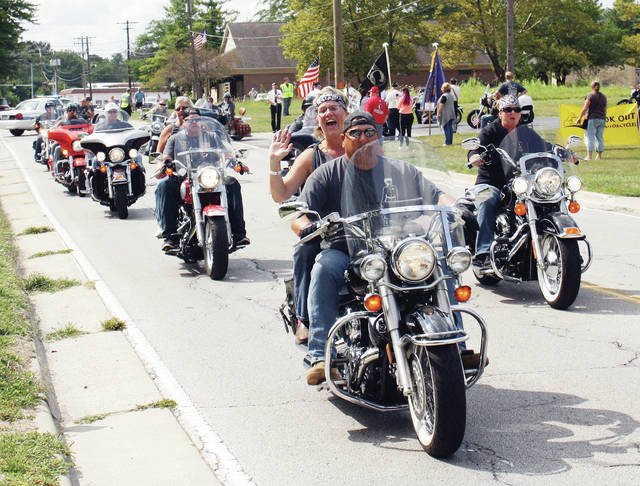
There are many important considerations when it comes to planning any charity event – and there are many unique ones when it comes to planning a motorcycle ride. Even if you’re an experienced rider, that doesn’t necessarily make you competent to host an event. Planning a ride for 1,000, 200, or even 100 riders is a lot different than planning a run for you and a few friends.
POKER RUN vs. MEMORIAL or ESCORTED RIDE
There are two basic charitable rides out there – with countless variations of each. There is the Poker Run (or Dice Run, Raffle Ride, Passport Run, etc..) where riders hit various stops and get checked in. On most of these, riders are able to set their own pace and travel with their own groups, others, or on their own between the various stops. The riders have a “First Rider Out” and “Last Rider In” time frame that they can operate within.
The alternative is the Escorted or Memorial Ride. This is one big group of bikes – all leaving at once, all riding together. For most this is both a logistical nightmare and a huge safety concern. You need to coordinate escorts – blockers, you need to work with public safety organizations, and you are locked into a more restrictive schedule as far as riders participating. For the most part, if they miss “Kickstands Up” they miss the ride.
While Memorial and Escorted rides are impressive, they also represent major safety concerns for those participating. A lot of experienced riders won’t participate in major escorted rides because of the risk presented. Riding closely with unknown riders, risking cars and trucks trying to “cut through” and being locked into a tighter schedule are all concerns for some riders.
Memorial and Escorted rides can provide a stirring tribute to a cause, however we strongly recommend sticking to Poker Runs for organizations undertaking their first motorcycle ride event or those with limited volunteers or resources.
“One of the most common mistakes I’ve seen made is planning a route with cross-traffic stops. For instance, if you’re routing everyone west bound, your stops should be on the north side of the road – allowing your riders to make an easy right turn into the stop. If your stop is on the other side of the road, the riders are forced to stop and wait for on-coming traffic. This can hold up traffic and cause problems, especially if you have a lot of riders. And these problems can lead to someone getting hurt or worse.”
If this is your first motorcycle event or ride, we would certainly recommend that you find someone with experience in organizing such events and better yet, an entire organization that has the knowledge on such things.
There are countless riding organizations out there. From Harley Owners Groups ™ and traditional AMA motorcycle clubs to civil service and military riding groups, there are plenty of experienced groups that can help with your event. ABATE (American Bikers Aimed Toward Education) is a grass roots, non-profit organization focused on motorcyclist’s rights and promoting safe riding practices. They have chapters throughout the state and have great resources when it comes to organizing a riding event.
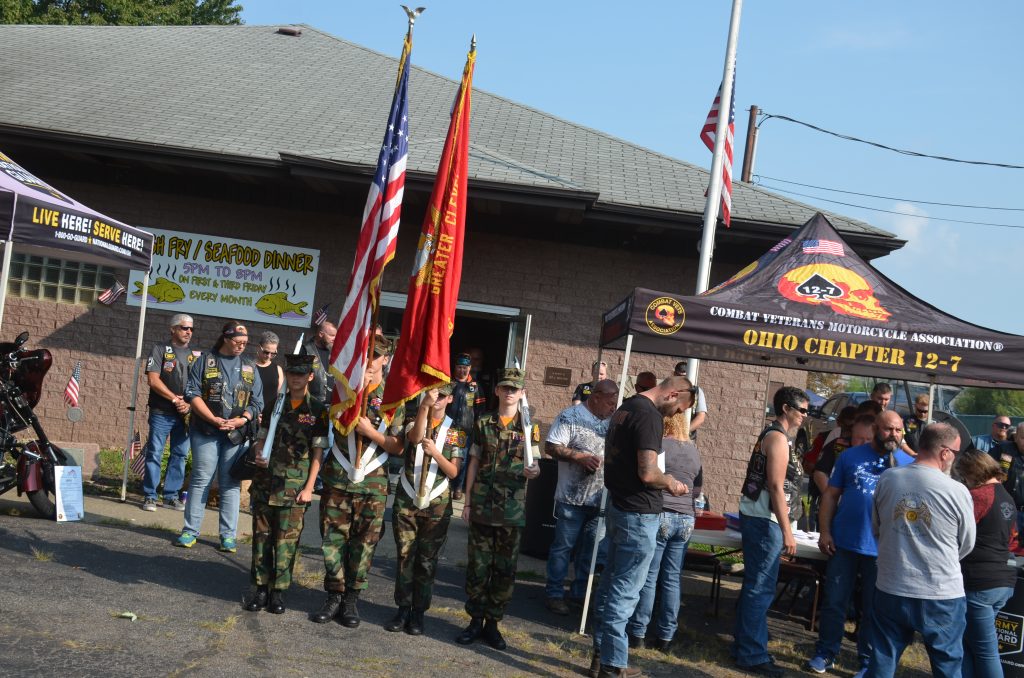
There are also professional organizations and promoters that handle such events as well. As always, it’s a question of cost and return on investment. A grass roots riding organization may be able to bring a lot of volunteers (and consequently riders) to your event – all for a portion of the proceeds or maybe even just for the exposure. A marketing professional or event organizer may do it all for a flat fee – working with your own volunteers or his staff and temps. It all depends upon your situation and the dynamics of it. A 50% split with a local riding organization may end up costing a lot more than a $3,000 consulting fee charged by a professional promoter. But if you find a partner charity with a large volunteer base – they may work a deal that is much more beneficial for you. It all comes back to depending on your specific resources and needs. Most importantly, you need to determine how many people you have available to help plan, promote, and finally host the event.
ReasonsToRide can help promote your event for as little as $100 and has basic Ride Promotional Packages starting at $500 that can include online pre-registration, digital + print advertising, and even assistance with sponsors and on-site coordination. For more information, email Info@ReasonsToRide.com
The first step in planning a Poker Run “is making sure that you have enough people to work the event,” according to another local ride organizer. “There’s a lot of work to be done beforehand, which a few hard-working people can knock out, but you’re going to need people to work the actual event.”
“From the folks handing out the cards to people flagging the bikes in the lot, it takes a lot of people to host a well- organized run.”
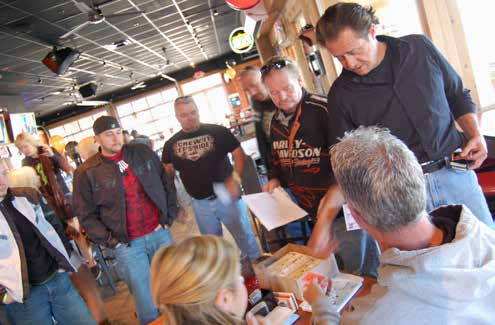
Regardless of where they come from, you will need bodies to pull the event off. You need to be confident that you have either the volunteers or resources to pay staff to work your event. If you don’t, there’s no point in going any further.
The first group that you need to identify is your key organizers and leadership. If you have a large enough pool – you can set up committees to tackle specific tasks. For large rides with enough key personnel to pull it off, the following are standard committees or areas of responsibility.
- Ride Logistics
- On-Site Logistics
- Registration
- Volunteers
- Marketing
- Sponsorship
- Awards
- Social
If you have enough people, you can set up committees to address each of these areas. If you don’t, a few hard working and dedicated individuals can cover these responsibilities. Either way, they need to be considered and eventually covered.
PLANNING AND SCHEDULING YOUR RIDE
“Start your planning early, so that you have plenty of time to work things out. Everything has to be manageable and the key to that is to keep things simple.”
“By the first of the year, we are pretty much booked out with all of our rides for the upcoming season. Many of these are year-round projects for the organizations that host them, some though are smaller efforts put on by a few volunteers or organizers. Many of those take at least 4-6 months of advance planning.”
Indeed, after you have determined that you have the people needed to pull off your event – the next step is to determine a date for the event. A date that allows enough time for you to effectively plan, doesn’t conflict with other events in the area, and makes sense in terms of weather.
Being in the Midwest, there are some fundamental restrictions in terms of our riding season. Traditionally, our season starts in May and ends in October. May and October are both dicey though, as inclement weather can hit us on either end of the season. It’s not uncommon for us to get hit with snow in October and the last few May’s have been amongst the wettest on record. Fall runs get complicated with end of summer commitments, last minute vacations, football, and school being in session – so September and even late August events are more difficult to promote. That leaves us with June through early August as our primary season. This equates to approximately 11 weekends for you and everyone else planning motorcycle events to choose from.
So, your next consideration is what else is already going on in your area? For this you need to consult with the various dealerships and venues in your area. You can call them up, check their websites, or just ask around. Eventually, you’ll be able to find them all on ReasonsToRide.com – but if you’re starting in your planning, you’ll need to look back at past calendars and listings for where the “big annuals” land.
If you’re planning a first-year event, I’ve also found that it’s helpful to follow a major event that might allow you the opportunity to promote your run. For instance, if you are hosting a poker run or charity run anywhere close to Sandusky, Ohio or even Northern Ohio – I’d recommend you getting a booth at Ohio Bike Week. It’s the “Largest Motorcycle Event in the Midwest” and just about any rider within 200 miles is going to be there. It’s a great chance to promote your ride to thousands of dedicated riders. Booths set up at regional rallies, local bike nights, or even swap meets allow you to directly connect with riders to talk about your event.
When bikers have a great time at an event, they often get primed for “the next ride” so I suggest striking while the iron’s hot. These established events often present a great opportunity for you to promote your ride to a group of riders together, when it’s easy to get everyone to commit at ounce. You might also consider offering early registration packages – maybe discounted or including a free t-shirt – for those that sign up at the earlier event. Not only does it lock in riders, It might also encourage them to get the whole gang to sign up. If you have online registration, you can even have tablets or QR codes on banners and cards to allow folks to easily sign up with you.
When launching a new ride, it’s especially worth considering opportunities such as this. Every little thing helps and it’s worth considering not only events that might conflict with your date, but also events that might contribute to your numbers as well. I refer to these as “spring boards”. With these in mind, it’s worth considering that the earlier your ride falls in the season, the less time you have to promote it in such a manner.
Lastly, you need to feel comfortable that you’ve allowed yourself enough time to effectively plan and market your ride. If you are an experienced organizer with a solid pool of riders to draw from, (IE. from a riding club, customer base, or larger organization) you may be able to throw together a ride in just a few weeks. If you or your organization are new to the motorcycle community or inexperienced in planning a ride – you need to allow yourself more time to effectively plan the run. If this is a first-year event and you are looking to reach out to unknown riders in the community – you will need to allow yourself at least 6 to 8 weeks. If you are looking to secure sponsorships and outside contributions, you should allow yourself at least 3 to 4 months of advance work. Of course, a lot of this depends on how many people you have working on the Poker Run. If you have a larger organization to draw on for support and contributions, you can organize things much more quickly. If it’s a smaller team project – such as your local bar or local riding club, you will need to allow yourself more time to knock off everything that’s on the list.
NEXT UP: POKER RUN 101: PART 2 RUN STOPS and HOST SPONSORS
Find it in next month’s edition of Reasons To Ride or check out our Blogs at ReasonsToRide.com
The Reasons To Ride Crew has been helping promote and organize rides for more than 20 years – and hosting online registration for the past 4 years. Along the way, we’d like to think we’ve picked up a few ideas and pointers from people far smarter than us – and maybe figured out a few things ourselves as well. For more information on marketing or planning your event – email: Info@ReasonsToRide.co
Read More of Our Magazines
Looking for more riding inspiration, tips, and event highlights? Explore our complete collection of past Reasons to Ride magazines in our Past Issue Bookshelf. Each issue is packed with valuable content for riders, including scenic routes, gear reviews, and updates from the motorcycle community.

